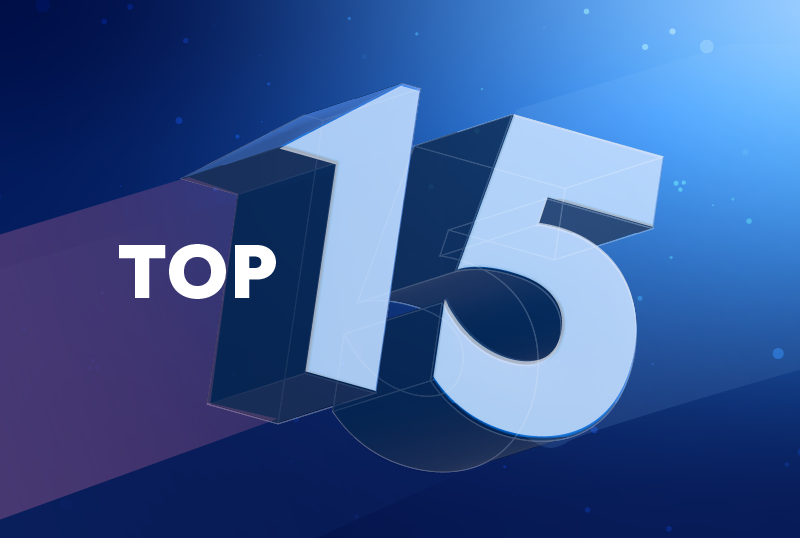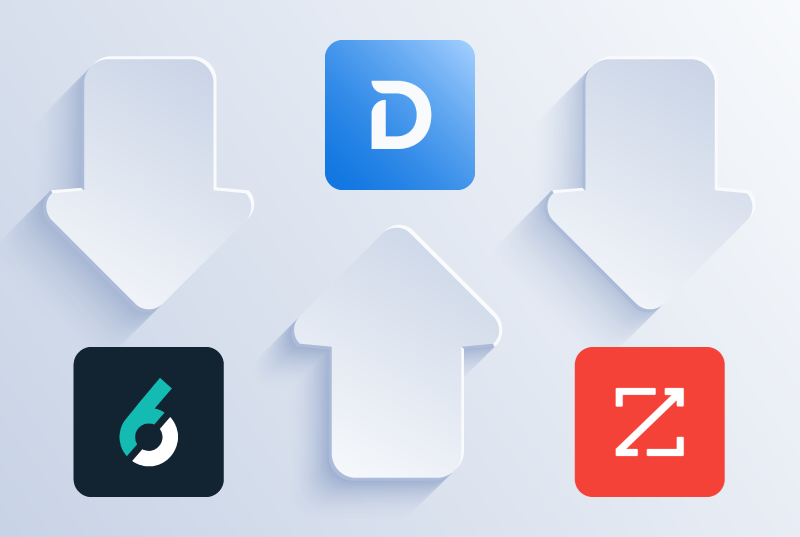Should SDRs or Marketing Own Lead Nurturing?
Explore why lead nurturing is most effective when marketing and SDRs work together in a hybrid approach

Today’s buyers are more empowered and wield more autonomy than ever. They engage with companies on their own terms, conducting extensive research across various channels long before they want to engage with sales teams.
That’s why lead nurturing remains such a key element of a good B2B go-to-market.
Lead nurturing is the process of building a relationship with prospects that are not yet sales-ready, by conducting an informative dialog, regardless of the lead’s budget, authority, or timing.
It just makes sense. In my experience, only 2% of the people who register for an event or download an ebook are ready at that moment to talk to a sales rep. So why wouldn’t you find a way to keep in touch with the others to help them recognize the business challenges you solve — so you’re top of mind and they’ll want to engage with you when they are ready?
That said, a key question has come up in the last few years: who should nurture prospects, marketing or sales development representatives (SDRs)? Historically, marketing automation platforms took the lead, but with the rise of sales engagement solutions, SDRs have started to play a pivotal role. So, which approach is more effective? Ultimately, as you’ll see, I think a hybrid approach works best.
The 411 of Lead Nurturing: A Mini-Primer
Lead nurturing is about building and reinforcing relationships with potential buyers at every stage of the buying journey. A successful lead nurturing program focuses on understanding the needs of prospects and providing them with the information they require to build trust, increase brand awareness, and maintain a connection until they’re ready to make a purchase.
In my time at Marketo I found that I could generate 50% more qualified sales leads at 33% lower cost by nurturing my not-yet-ready-to-buy prospects.
A good lead nurturing program will send the prospect some useful information once every week or two. Ideally, the information should be personalized to their interests, based on where they are in the journey, their persona, and the other content they’ve interacted with. The content will often come over email, but companies also use social, display ads, direct mail, voicemail, or other channels. And perhaps most importantly, the content should be useful and not promotional; educational and not salesy. One approach to consider is the 4-1-1 methodology: out of every six messages, four should be 100% educational and helpful (or at least entertaining), one can be about your business but not too salesly (perhaps a customer review), and one can be a hard ask, such as a demo offer.
OK, so now onto the core question: should lead nurturing come from marketing or SDRs?
Historical Perspective: Marketing Automation’s Dominance
Marketing automation platforms (MAPs) enabled businesses to implement lead nurturing at scale for the first time. MAPs enabled teams to develop flexible, adaptive engagement streams that would automatically send emails and other interactions to various buyer segments, moving the prospects between nurture streams based on their behaviors.
The key advantages of marketing automation are:
- Unlimited Scale: Automation can handle a vast number of leads simultaneously, ensuring no one falls through the cracks.
- Central Control: There’s a consistent message and quality in communications, ensuring brand conformity.
- Enhanced Analytics: Automated systems provide detailed metrics on email performance, enabling continuous optimization.
- Volume Management: Automation can effectively manage the overall volume of marketing emails, ensuring leads aren’t overwhelmed.
The Rise of SDRs in Lead Nurturing
SDRs are essential for efficient pipeline generation. They can ensure fast lead follow-up and take on prospecting tasks more cost-effectively than expensive account executives.
In the traditional model, marketing and SDRs work in a linear fashion, like a relay race: marketing generates and nurtures the prospect until they are sales ready, at which point, the lead gets passed to SDRs like a baton.
But recent trends have broken down that linear model. Top SDRs have always understood that buyers may not be ready today but will eventually be in-market. These SDRs focus on creating positive experiences rather than always pushing for a meeting. The rise of account-based experience (ABX) led to closer alignment between the teams at every stage of the buying journey. And the rise of sales engagement solutions like Outreach, Salesloft, and Groove have empowered SDRs to take a more active role in nurturing.
The unique advantages of SDRs owning nurturing include:
- Human Touch: There’s an authenticity to human interaction. People are more likely to engage with a message if it genuinely comes from another person.
- Flexibility: SDRs can strike a balance between manual channels (customized emails, phone calls, social media) and automated channels (drip sequences). Striking the right balance is crucial to ensure effective communication without overwhelming the SDR or losing the human touch.
- Active Listening: They can adjust their approach based on replies and other real-time feedback from prospects.
- Customized Communication: Humans can more easily tailor the content and timing of each message for each prospect, adding a personal touch to the typically automated task of nurturing.
The Pros and Cons of Marketing vs SDRs Owning Lead Nurturing
| Marketing | SDRs |
|---|---|
| Unlimited Scale: Handles numerous leads, ensuring no lead is overlooked. | Human Touch: Authentic human interaction engages people more effectively. |
| Central Control: Provides consistent messaging and quality, ensuring brand conformity. | Flexibility: SDRs balance between manual and automated channels. |
| Enhanced Analytics: Allows for continuous optimization with detailed metrics. | Active Listening: Approach can be adjusted based on real-time feedback from prospects. |
| Volume Management: Manages email volumes, ensuring leads aren’t overwhelmed. | Customized Communication: Humans tailor content and timing, adding a personalized touch to tasks. |
Hybrid Nurturing
While both marketing automation and SDRs have their strengths, ultimately a hybrid approach offers the best of both worlds. SDRs focus on personalization and human touch, while marketing automation handles orchestration, scalability, and analytics.
One of the challenges with hybrid lead nurturing is that without proper coordination, a prospect might receive emails from both teams, leading to confusion and a potential loss of trust. It’s crucial to have clear communication and defined roles to ensure that the prospect’s journey is smooth and consistent.
A few strategies we use at Demandbase to make this work:
- We adjust ownership based on the ICP fit and account and prospect journey stage. If a lead is not a qualified buyer, then they’ll only ever get the automated nurturing. (You might ask, why nurture them at all? The data is never perfect and since automated nurturing is virtually no cost, it’s a good idea to keep in touch.) If the person and company are a good fit for us, then ownership is assigned based on the journey stage. Prospects in an early stage such as Awareness or Engagement are nurtured through our Marketo marketing automation platform. But when they reach a Marketing Qualified stage (MQL or MQA), the automated nurturing stops, and the SDR takes over.
- We sometimes make automated emails more informal and appear as if they’re coming directly from the SDR. This approach can give some semblance of the human touch while easing the SDR’s workload, allowing them to focus on leads that are more likely to convert.
- We give each SDR deep account intelligence — including intent data, info about the technologies in use, campaign response, social posts, connections, and more — so they can understand everything about the account and person, and use it for deep personalization.
- We have a robust set of SDR “Recycle” reasons. These let the SDR specify exactly why a prospect needs more nurturing, and allows the automation to adjust the content they receive accordingly.
- Finally, we use Demandbase Orchestration to both move prospects into different automated nurture streams, as well as to launch Outreach sequences automatically based on prospect behaviors. In this sense, it truly is an orchestra conductor, ensuring that the different pieces work together in harmony.
The Future of Lead Nurturing with AI
Looking ahead, will AI make this question obsolete? Will all prospects be nurtured by automated sequences uber-personalized by machines, giving us the best of both worlds? There are a lot of companies exploring this idea, so it will be exciting to see how it plays out.
Conclusion
Lead nurturing has seen a shift from a solely automated process to a more balanced approach, integrating the human touch provided by SDRs. The hybrid approach adopted by companies like Demandbase can combine automation with personalization, ensuring that prospects receive relevant and genuine interactions throughout their journey. The future promises further advancements with the integration of AI, potentially offering the best of both worlds — automation’s scalability and deep personalization. Balancing these elements is key to maintaining meaningful connections with prospects and being top of mind when they are ready to make purchasing decisions.

Related content



